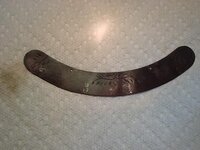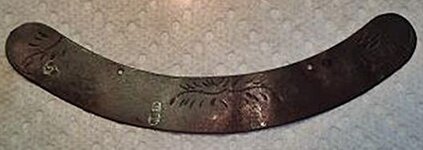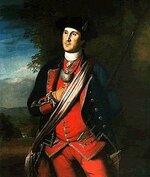mrtwintower
Jr. Member
- Jun 15, 2010
- 45
- 0
Found this item where we believe a fort was. Could this item be some sort of amulet or decorative chest piece? It is about 4-5 inches long. It seems to have about 4 places where something was attached to it. Could this have been a trade piece for indians?
Thanks for any ideas or help.
Thanks for any ideas or help.





 This is most certainly an 18th century gorget.
This is most certainly an 18th century gorget.





